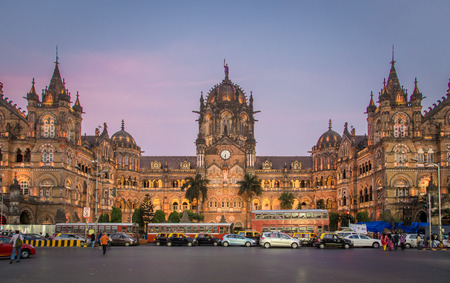23 April, 2017
This blog piece is excerpted from a previously published article in the Express Pharma, April 16-30 Issue Innovation is the root of success in the competitive world of today. Creativity manifests in new ideas and technologies.
New technologies when adopted make life easy. This could not be more true than for the pharmaceutical industry. With the Indian pharmaceutical industry en route to becoming a major player in the global market by 2020, there is increased activity in terms of investments in research and development, access to world class healthcare at affordable rates for the public at large and a renewed focus on development in rural markets.
Though patent law in India has existed over the years, jurisprudence related to pharmaceutical patents is still developing. From granting product patents, to specifically identifying patentable subject matter and incorporation of provisions for compulsory licensing, the law has come a long way since its inception. A conscious effort has been made to ensure that our laws are Trade-Related Aspects of Intellectual Property Rights (TRIPS) compliant while supporting a larger initiative to ensure that life saving medicines are available at affordable prices (compulsory licensing, price control etc.).
Courts in India are getting increasingly sensitive to the complex and technical issues that form the pith and substance of complex pharmaceutical patent litigation. Patent litigation turns on opinion of experts and evidence, which are often absent at the preliminary stages of litigation especially the interim injunction stage. As such the practice of passing ex-parte interim injunctions has given way to a more rational and balanced approach, wherein questions of prima facie infringement, balance of convenience and irreparable injury of the parties are weighed, analysed and rationalised along with a larger public interest perspective. The Supreme Court has time and again insisted that patent matters should be handled on an expedited basis especially where issues of public health, access to life saving drugs and commercial interests are involved and that matters should expeditiously head to trial. Courts are thankfully paying heed to this. Times are changing.
Though India has been accused of judicial pronouncements that are pro generic and anti innovator, the accusation is not largely true given that there have been instances where the Courts have supported the patent owners. Such cases, however, have turned mostly on technicalities. The law is still developing and there is hope that the Courts would balance enforcement of statutory rights, socio-economic requirements and existing law with international obligations and the current push for greater investment in the sector.
The Supreme Court’s judgment in the Novartis case gave rise to a general perception that India is no longer a country that respects and protects patent rights of innovators. India has done what any developing nation would do – amend its laws to comply with its international obligations under TRIPS to a degree whereby its compliance is exact. India is TRIPS compliant in the need to provide cheap and readily available drugs to the public at large. This has caused many innovators to seriously rethink their India strategies and also take their woes to international forums where India’s presumed anti innovator patent regime has been a subject matter of many debates. These debates continue at a national and international level and raise significant questions on the issue of balancing national interests against the backdrop of the current trend for economic reforms that are increasingly looking at attracting foreign investment into India. Will the Government’s push for increased foreign investment shadow its responsibility towards the citizens or will it tow a median path? The question is pertinent.
India has updated all its IP laws to comply with its international obligations and has also invested in infrastructure at the four patent offices in India to accommodate such changes and facilitate faster and smoother patents prosecution. There have been many cases and precedents in the past few years wherein Courts in India have protected interests of patent owners and granted injunctive reliefs in infringement related cases. However, cases where public interest has been considered paramount are also present. It is a mixed bag. With a view towards reducing the burden on the Courts, the government has introduced The Commercial Courts, Commercial Division and Commercial Appellate Division of High Court Act, 2015(CC Act). Intellectual property disputes have been categorised as commercial disputes. The law lays down strict timelines so as to reduce the overall litigation timeline and it is expected that that proceedings before such commercial Courts would take significantly less time. The right moves are being made.
With the initiatives like “Make in India” campaign, the Indian Government is pushing reforms in the innovation domain. Also, the Government of India has approved the “The National Intellectual Property Rights (IPR) Policy” which aims at “Creative India; Innovative India”. We have recently seen a few measures such as the appointment and training of patent examiners and more pro-active amendments and actions by the patent office on issues concerning applicants and attorneys.
With all these positive measures, the pharmaceutical industry and healthcare at large is gaining momentum to consolidate its existing position and record unprecedented growth. With more than 3,000 pharmaceutical companies, India is slowly making its presence and emerging as a significant player in the world market. India has already positioned itself to compete with the counterparts of developed nations.
As a take home, the pharmaceutical sector should derive comfort from the fact that the genesis of the Patents Act in India is in consonance with international practices. Even though public interest and access to healthcare has become the mainstay of policy formulation and judicial interpretation, the balancing act of adopting international practices and standards for protection of patents and promoting innovation has gone a long way in maintaining India’s reputation of being the “Pharmacy of the World” and its international obligation and commitment of being a level player in a level playing field.
For further information, please contact:
Ashwin Sapra, Partner, Cyril Amarchand Mangaldas
ashwin.sapra@cyrilshroff.com

.jpg)





